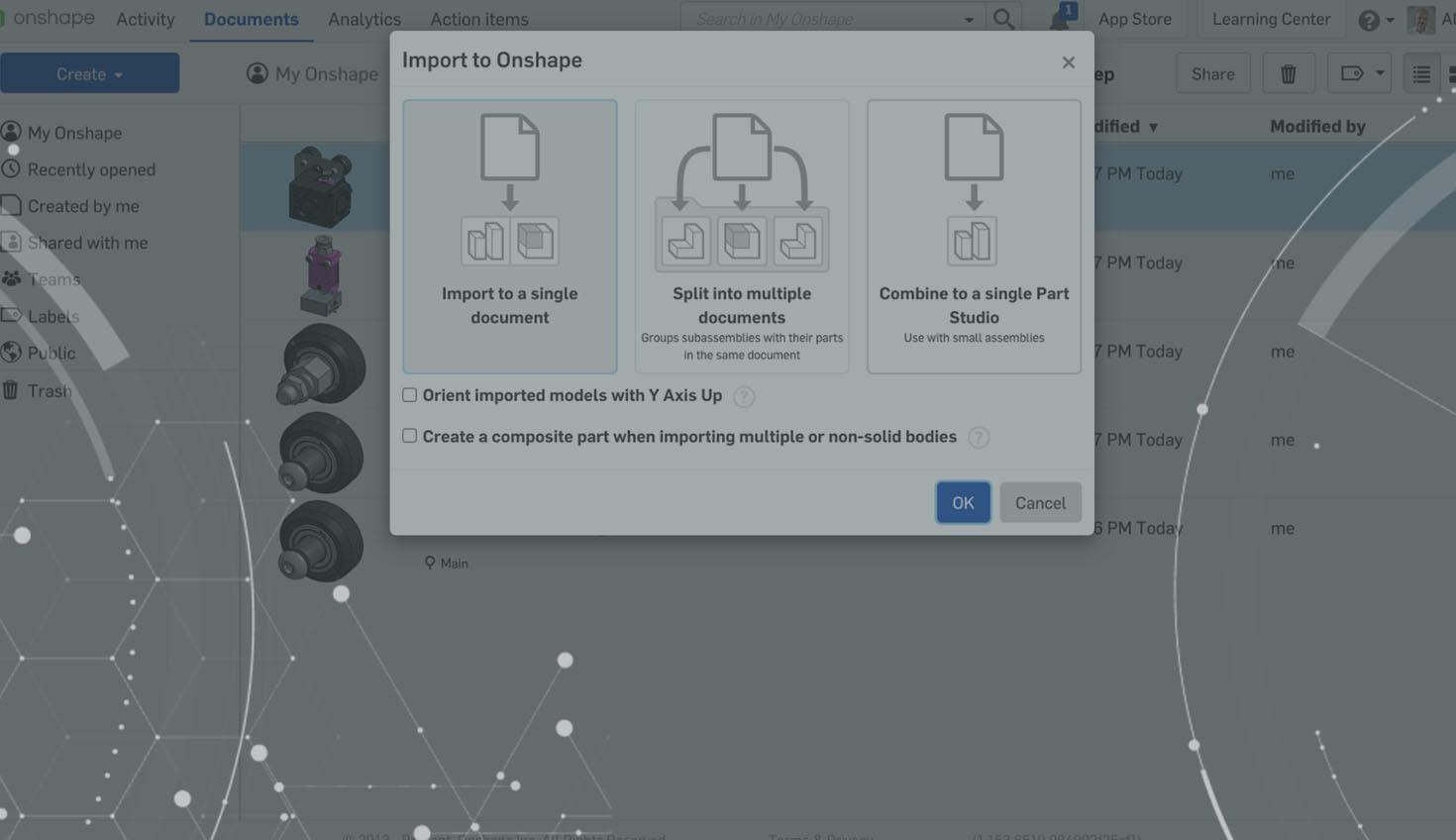
3:43
Onshape gives you the opportunity to import – or translate – CAD data from other CAD software in native format or with "interchange" file formats, such as STEP, IGES, and more.
The Onshape import panel has several options and specifications. What are the main differences between them?
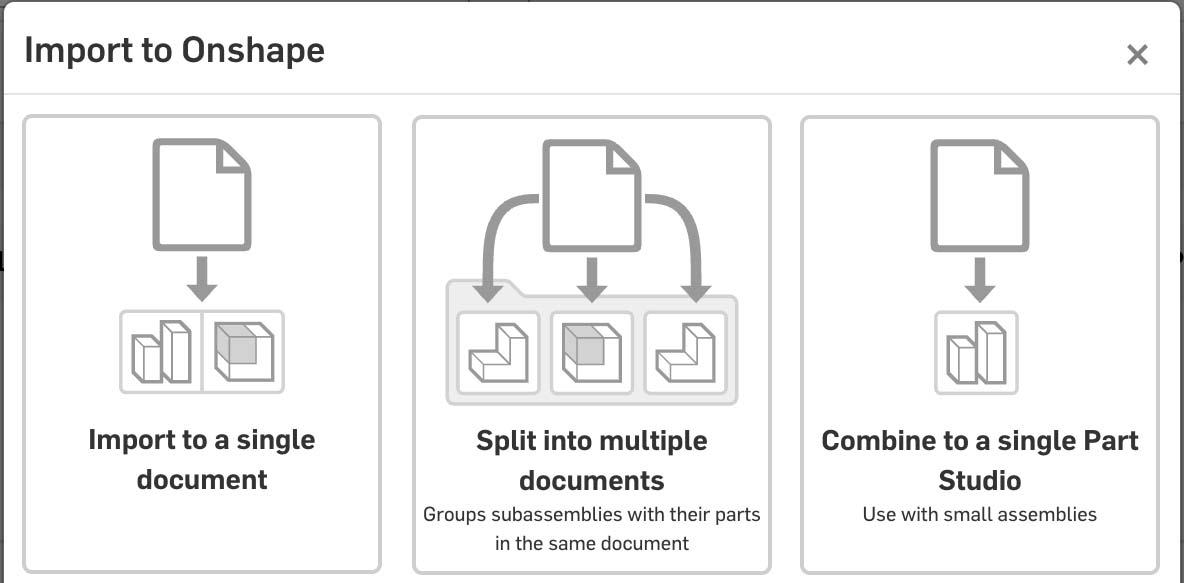
This Tech Tip will help you understand Onshape’s import settings and compare the results for each option.
Onshape’s Import Options
During the importing process, Onshape lets the user decide how to treat the resulting document or documents. But often the user doesn’t verify which is the right option to use in a specific scenario, so let’s quickly go through each option.
In this example, we’ll have a document with the following structure:
- The main assembly contains one part and two subassemblies.
- Every subassembly contains two parts.
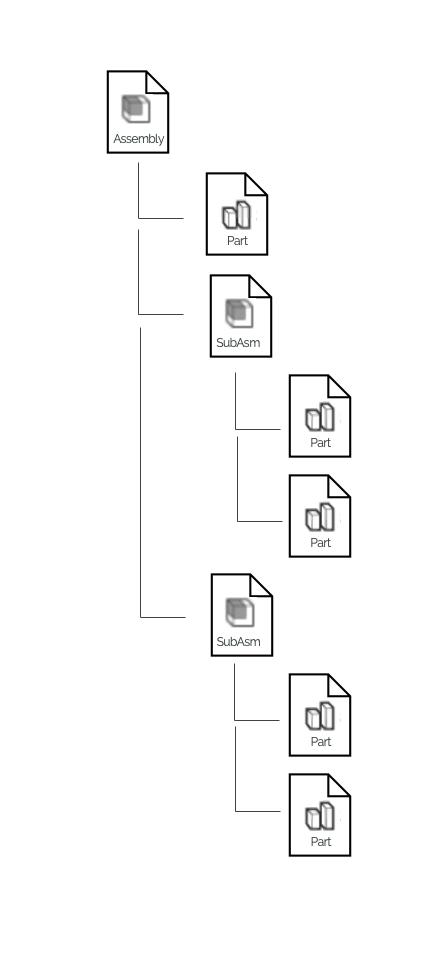
Import to a Single Document
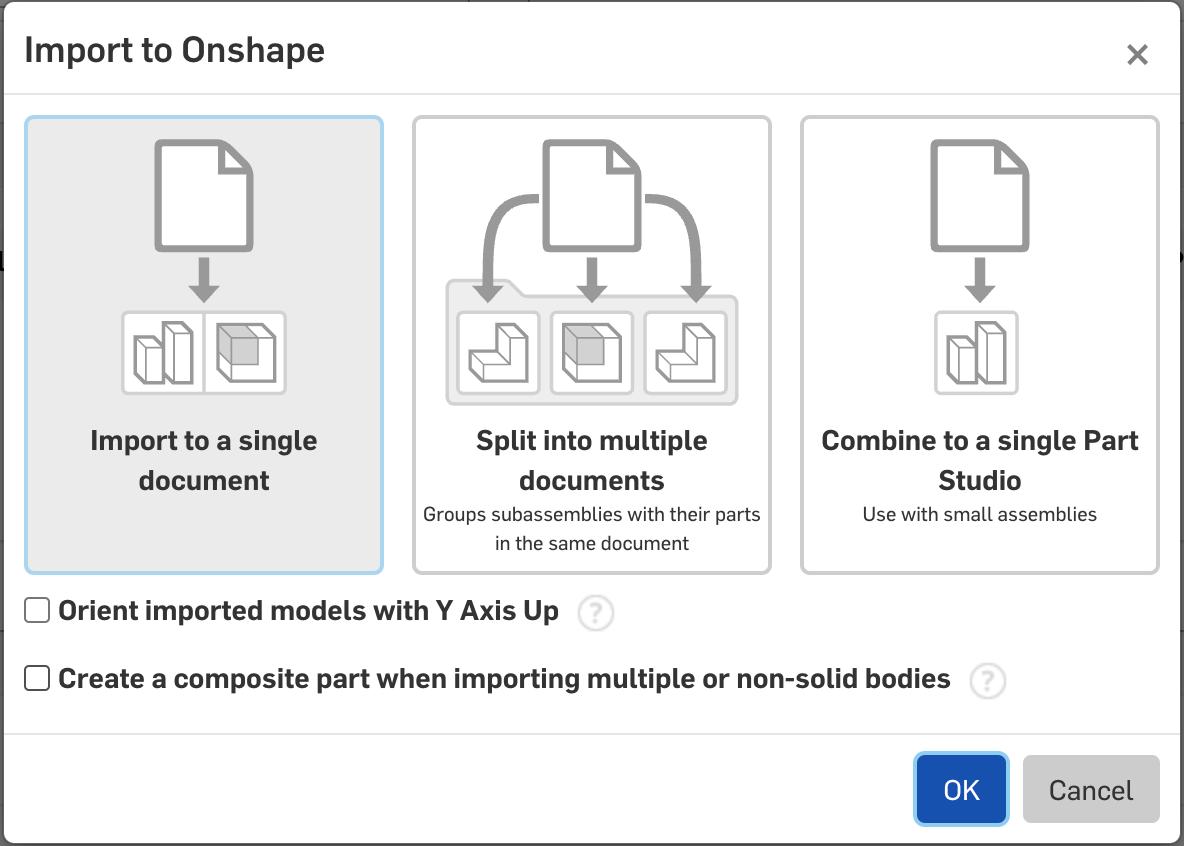
With this option, only one document will be created; if the structure is organized by Assembly-Subassembly-Parts, the result will be the following:
- Every assembly will have its own specific tab;
- All the parts will be contained in a single Part Studio, and every part will be aligned to its origin.
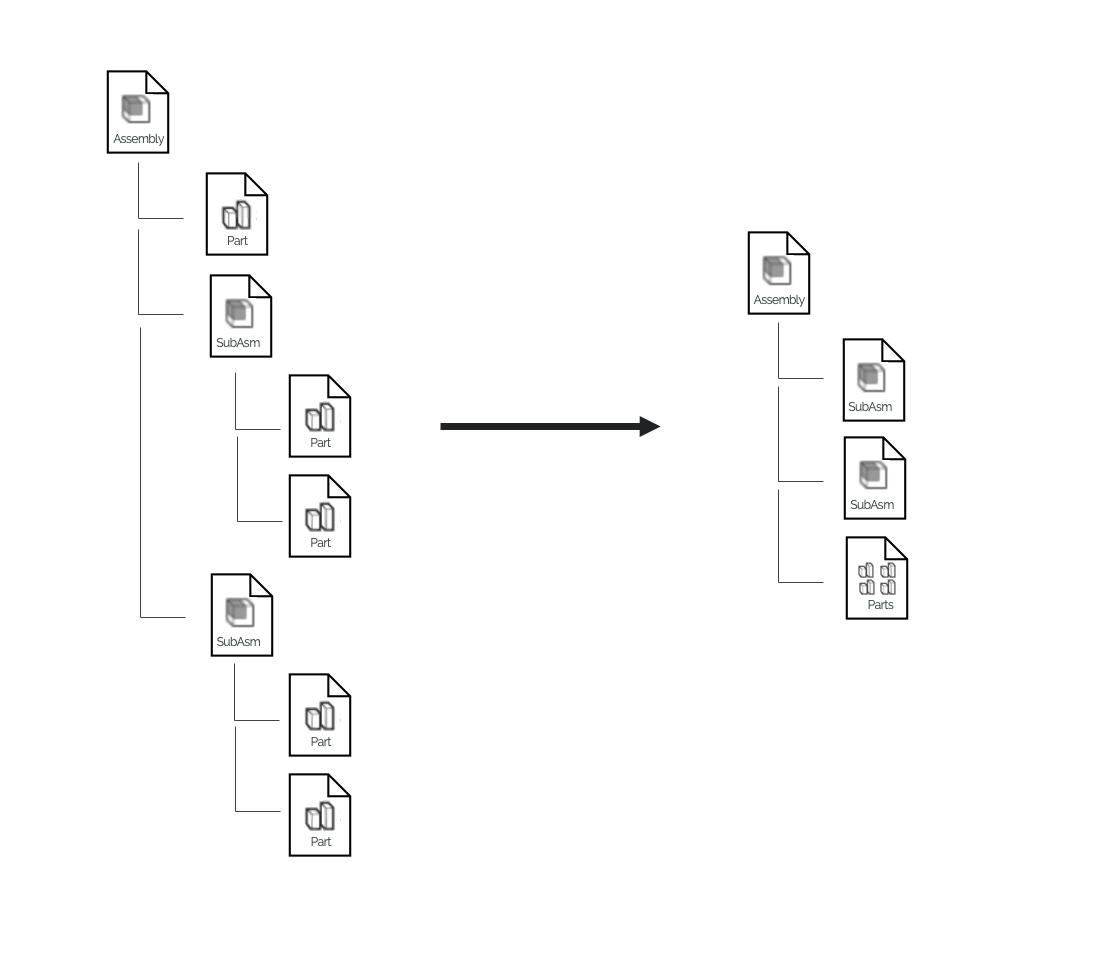
When selecting this option, you can also consider selecting the following specifications:
- Create a composite part when importing multiple or non-solid bodies: If you are importing a multi-body part or non-solid bodies, activating this flag the result will be a “Composite Part”.
- Orient imported models with Y Axis Up: The Onshape up axis is the Y. If you don’t activate this flag the model will be oriented with the native up axis (example: Y).
Split into Multiple Documents
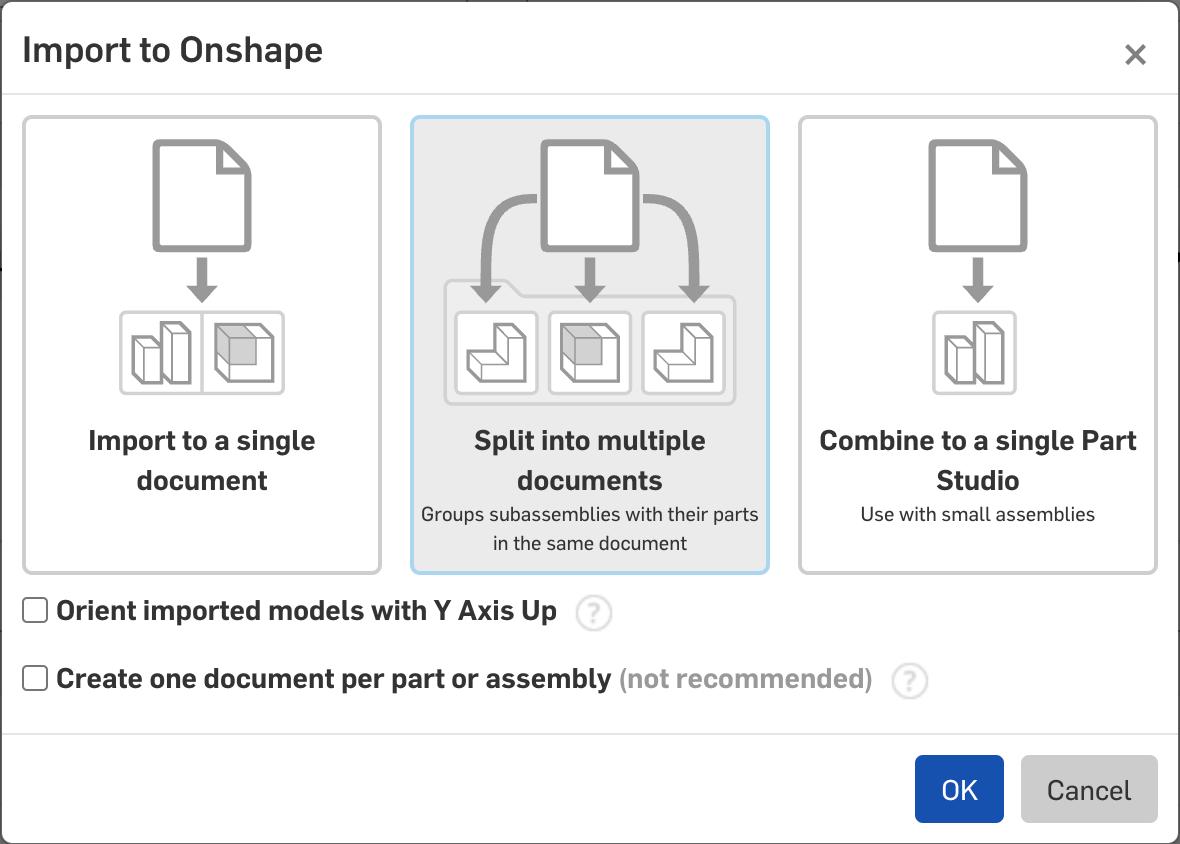
If this option is selected, one document will be created for all assemblies and for all subassembies. For every assembly or subassembly, in each document, all the relative parts will be added, and every part will be split into separate tabs.
If the native part is multi-body, every body will appear as a single part and in a single tab.
When selecting this option, you can also consider checking the following specifications:
- Orient imported models with Y Axis Up: The Onshape up axis is the Y. If you don’t activate this flag the model will be oriented with the native up axis (example: Y).
- Create one document per part or assembly: Every part will be created as a single document. This is not recommended because the result will impact performance and the number of documents created. Use it at your discretion.
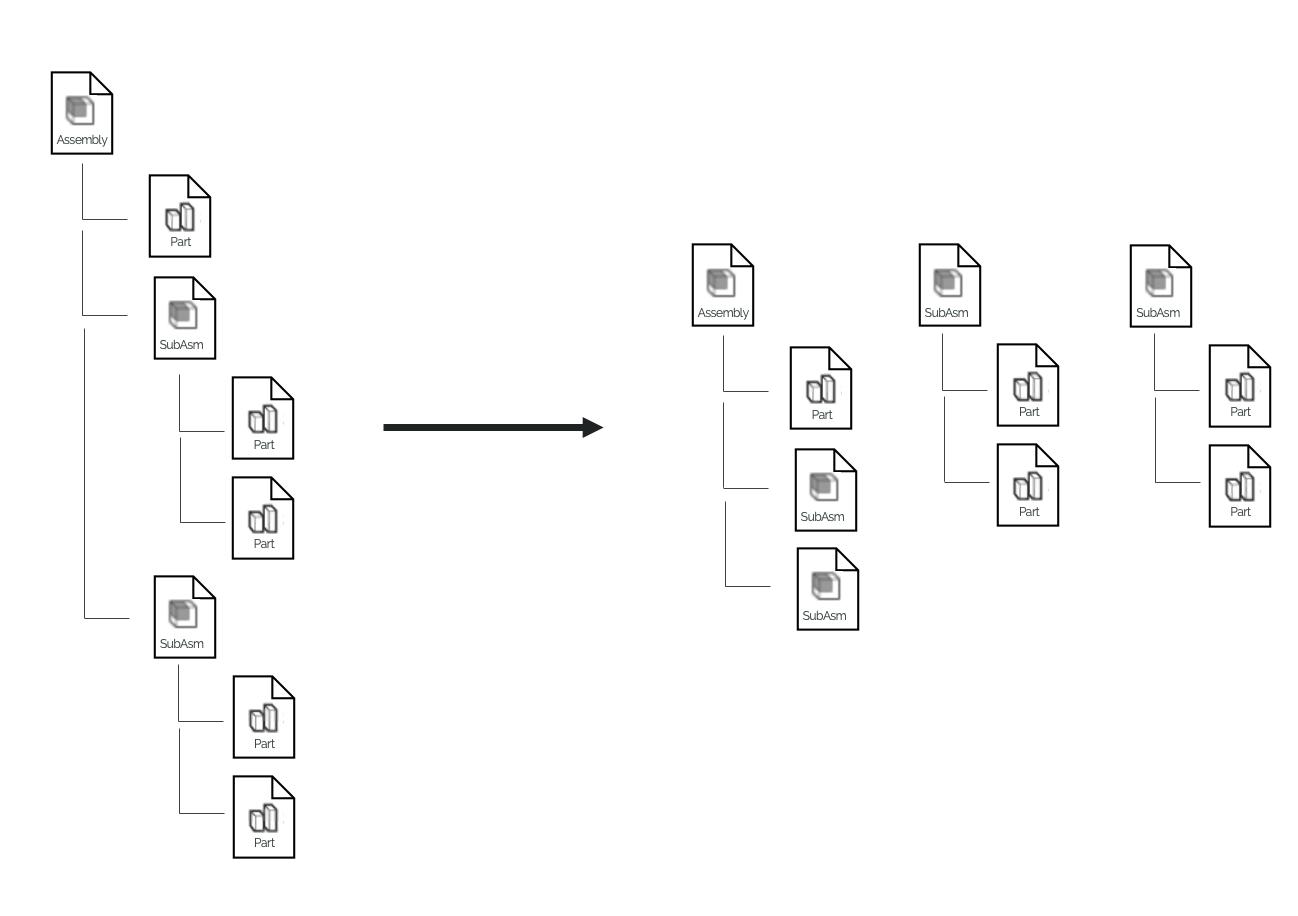
Combine to a Single Part Studio
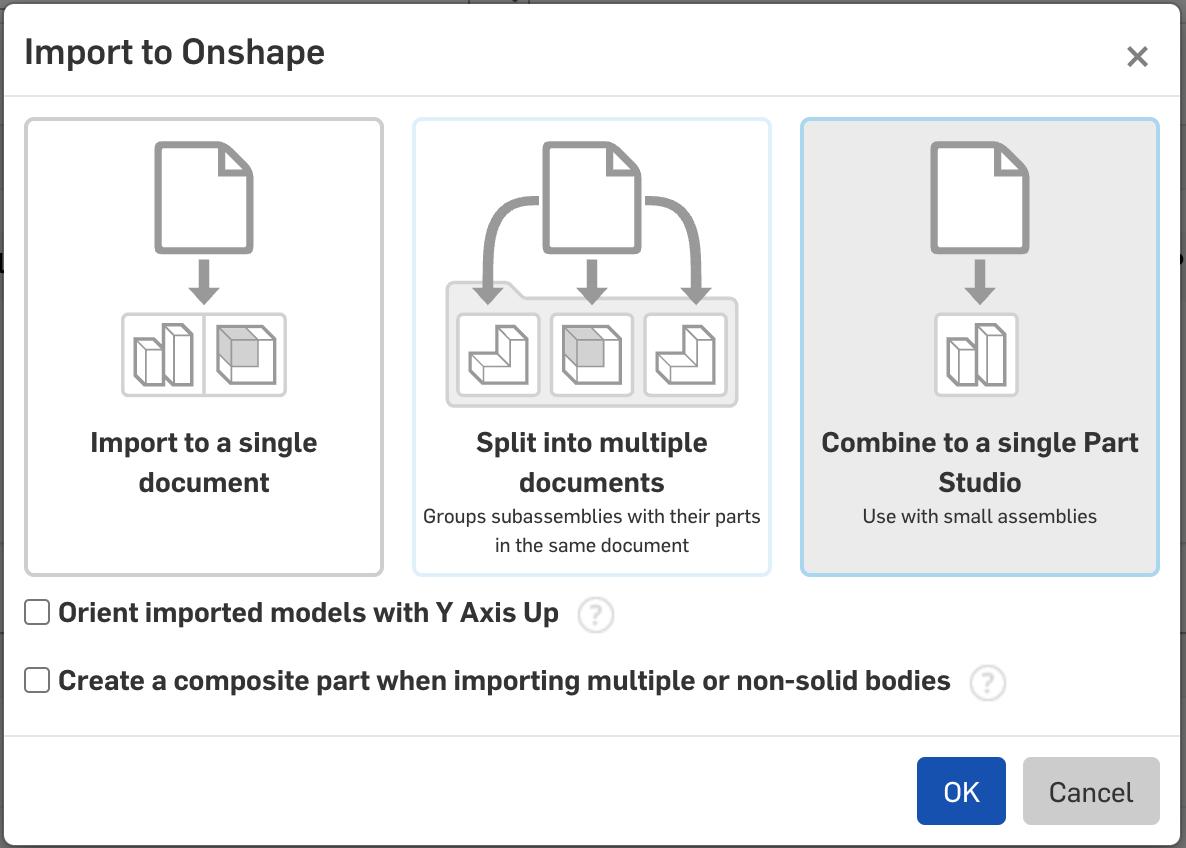
One document will be created with the same name as the document, no subassembly will be created, and there will be only one Part Studio tab, with all the parts inside of it.
Compared to the Import to a Single Document option, the parts will be in the same position where they were in the Assembly.
For multiple instances, like the result of a pattern, multiple parts will be created.
When selecting this option, you can also consider checking the following specifications:
- Orient imported models with Y Axis Up: Onshape up axis is the Y. If you don’t activate this flag the model will be oriented with the native up axis (example: Y).
- Create a composite part when importing multiple or non-solid bodies: All the parts will be merged in a “Composite Part”, with a unique entity. An option that can be used in, for example, all those situations where you need to import an assembly but treated as a single code.
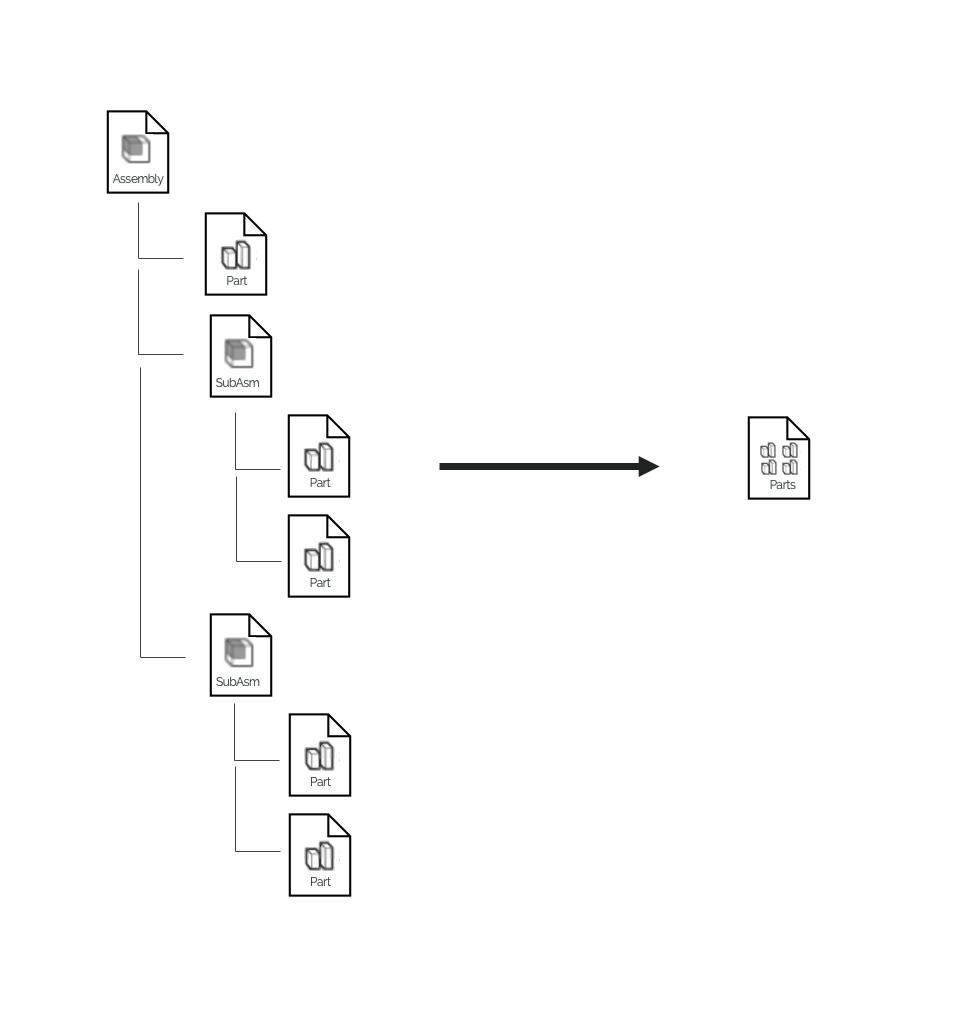
How to Manage Legacy CAD Data
An archive of legacy CAD data can be imported in multiple ways, and in different formats. First, Onshape can open natively a large list of CAD software.
Alternatively, you can import a zipped assembly by following this naming convention: The ZIP filename must match the name of the top-level assembly.
The result from selecting one of the three options will be the same in terms of the hierarchy of tabs and documents. With two quick considerations: A multi-body part with the selection “Import in a single document” or “Split into Multiple documents” will be treated as an Assembly. If you save the assembly as a part, when importing it, the option “Combine to a single Part Studio” will be hidden.
In this Tech Tip, we briefly went through the different options users can choose when importing CAD data from other software.
Interested in learning more Onshape Tech Tips? You can review the most recent technical blogs here.
Latest Content

- Blog
- Aviation, Aerospace & Defense
- Branching & Merging
- Custom Features
- Learning Center
- Onshape Government
Why Aerospace & Defense Teams Choose Onshape for Product Development
12.18.2025 learn more
- Blog
- Evaluating Onshape
Cloud-Native CAD 2025 Wins: Revenue Growth, Real-Time Collaboration, Unified CAD-CAM
12.17.2025 learn more
- Blog
- Becoming an Expert
- Assemblies
- Simulation
Mastering Kinematics: A Deeper Dive into Onshape Assemblies, Mates, and Simulation
12.11.2025 learn more



